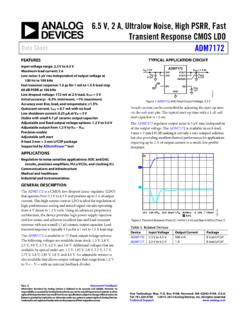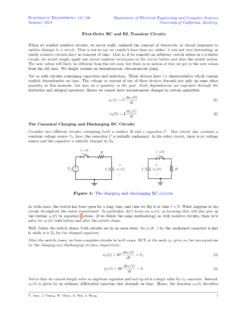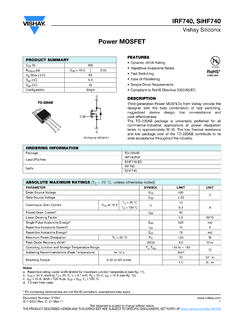Transcription of Simulation for Wind Turbine Generators—With FAST and ...
1 NREL is a national laboratory of the Department of Energy Office of Energy Efficiency & Renewable Energy Operated by the Alliance for Sustainable Energy, LLC This report is available at no cost from the National Renewable Energy Laboratory (NREL) at Contract No. DE-AC36-08GO28308 Simulation for Wind Turbine Generators With fast and MATLAB-Simulink Modules M. Singh, E. Muljadi, J. Jonkman, and V. Gevorgian National Renewable Energy Laboratory I. Girsang and J. Dhupia Nanyang Technological University Technical Report NREL/TP-5D00-59195 April 2014 NREL is a national laboratory of the Department of Energy Office of Energy Efficiency & Renewable Energy Operated by the Alliance for Sustainable Energy, LLC This report is available at no cost from the National Renewable Energy Laboratory (NREL) at Contract No.
2 DE-AC36-08GO28308 National Renewable Energy Laboratory 15013 Denver West Parkway Golden, CO 80401 303-275-3000 Simulation for Wind Turbine Generators With fast and MATLAB-Simulink Modules M. Singh, E. Muljadi, J. Jonkman, and V. Gevorgian National Renewable Energy Laboratory I. Girsang and J. Dhupia Nanyang Technological University Prepared under Task Nos. and Technical Report NREL/TP-5D00-59195 April 2014 NOTICE This report was prepared as an account of work sponsored by an agency of the United States government. Neither the United States government nor any agency thereof, nor any of their employees, makes any warranty, express or implied, or assumes any legal liability or responsibility for the accuracy, completeness, or usefulness of any information, apparatus, product, or process disclosed, or represents that its use would not infringe privately owned rights.
3 Reference herein to any specific commercial product, process, or service by trade name, trademark, manufacturer, or otherwise does not necessarily constitute or imply its endorsement, recommendation, or favoring by the United States government or any agency thereof. The views and opinions of authors expressed herein do not necessarily state or reflect those of the United States government or any agency thereof. This report is available at no cost from the National Renewable Energy Laboratory (NREL) at Available electronically at Available for a processing fee to Department of Energy and its contractors, in paper, from: Department of Energy Office of Scientific and Technical Information Box 62 Oak Ridge, TN 37831-0062 phone: fax: email: Available for sale to the public, in paper, from: Department of Commerce National Technical Information Service 5285 Port Royal Road Springfield, VA 22161 phone: fax: email: online ordering: Cover Photos.
4 (left to right) photo by Pat Corkery, NREL 16416, photo from SunEdison, NREL 17423, photo by Pat Corkery, NREL 16560, photo by Dennis Schroeder, NREL 17613, photo by Dean Armstrong, NREL 17436, photo by Pat Corkery, NREL 17721. Printed on paper containing at least 50% wastepaper, including 10% post consumer waste. iii Acknowledgments This work was supported by the Energy Research Institute at Nanyang Technological University, Singapore. The authors would like to thank Dr. Khanh Nguyen for fruitful discussions about integrating the National Renewable Energy Laboratory s Fatigue, Aerodynamics, Structures, and Turbulence model with the external drivetrain model, especially as related to Section 6.
5 This report is available at no cost from the National Renewable Energy Laboratory (NREL) at List of Acronyms CAE computer-aided engineering DFIG doubly-fed induction generator fast Fatigue, Aerodynamics, Structures, and Turbulence model GRC Gearbox Research Collaborative HSS high-speed shaft IGBT insulated-gate bipolar transistor LSS low-speed shaft MATLAB Matrix Laboratory NREL National Renewable Energy Laboratory SDC stress damper controller VIDC virtual inertia and damping control WRIG wound-rotor induction generator WTG wind Turbine generator This report is available at no cost from the National Renewable Energy Laboratory (NREL)
6 At Abstract This report presents the work done to develop generator and gearbox models in the Matrix Laboratory (MATLAB) environment and couple them to the National Renewable Energy Laboratory s Fatigue, Aerodynamics, Structures, and Turbulence ( fast ) program. The goal of this project was to interface the superior aerodynamic and mechanical models of fast to the excellent electrical generator models found in various Simulink libraries and applications. The scope was limited to Type 1, Type 2, and Type 3 generators and fairly basic gear-train models.
7 The final product of this work was a set of coupled fast and MATLAB drivetrain models. Future work will include models of Type 4 generators and more-advanced gear-train models with increased degrees of freedom. As described in this study, the developed drivetrain model can be used in many ways. First, the model can be simulated under different wind and grid conditions to yield further insight into the drivetrain dynamics in terms of predicting possible resonant excitations. Second, the tool can be used to simulate and understand transient loads and their couplings across the drivetrain components.
8 Third, the model can be used to design the various flexible components of the drivetrain such that transmitted loads on the gearbox can be reduced. Several case studies are presented as examples of the many types of studies that can be performed using this tool. This report is available at no cost from the National Renewable Energy Laboratory (NREL) at Table of Contents 1 1 2 fast Description .. 3 3 Interfacing fast and 5 Step-by-Step Preparation .. 5 fast Files and Data Entry .. 9 4 Wind Turbine Modeling .. 11 Type 1 Wind Turbine Model .. 14 Preexisting fast Type 1 Turbine Models (Steady-State Model).
9 14 Dynamic Induction Machine Model .. 20 Addition of Pitch Controller .. 28 Type 2 Wind Turbine Model .. 34 Rotor Resistance Control Concept .. 35 Implementation .. 36 Type 2 Turbine Model Results .. 41 Type 3 Turbine Model SimPowerSystems .. 43 Type 4 Turbine Model SimPowerSystems .. 45 5 Simulation of Normal and Abnormal Events .. 48 Normal and Abnormal Events .. 48 Electrical Abnormal Events .. 51 Grid-Related Events .. 51 Generator and Power Converter Related Events .. 51 Mechanical and Aerodynamic Abnormal Events .. 52 Wind Turbine Requirements .. 52 Grid Interface Requirement.
10 52 Electrical Component Requirement .. 54 Energy-Harvesting Requirement .. 54 Mechanical Component Requirement .. 55 Designing Controls to Mitigate Impacts .. 55 Mechanical Linkage .. 56 Electrical Linkage .. 56 6 Case Studies .. 58 Example Case 1: Grid Turbine Interaction .. 58 Type 1 WTG .. 58 Type 3 WTG .. 59 Example Case 2: Impact on Mechanical Linkages .. 62 Drivetrain Modeling .. 63 Model Integration .. 69 Example Case 3: Virtual Inertia and Damping Controller .. 74 Control Formulation .. 75 7 Conclusion .. 80 8 References .. 81 9 84 10 Appendices .. 85 Appendix A: Wind Turbine Drivetrain Modeling in Simscape/ SimDriveline and Interfacing with fast in Simulink User s Guide.
















